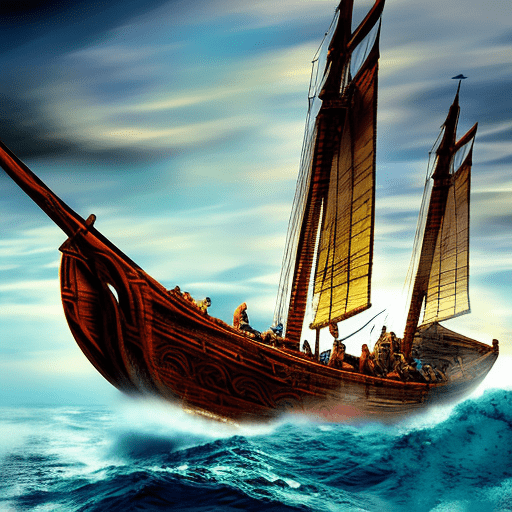One-line Summary:
Kon-Tiki is a thrilling true story of adventure and exploration as Thor Heyerdahl and his crew set out on a daring journey across the Pacific Ocean on a balsa wood raft to prove their theory of ancient migration.
Setting Sail on the Pacific Ocean
In Kon-Tiki, Thor Heyerdahl, a Norwegian explorer and ethnographer, shares his incredible journey across the Pacific Ocean on a balsa wood raft. The book begins with Heyerdahl’s theory that the Polynesian islands were settled by people from South America rather than Asia, contrary to popular belief. To prove his theory, Heyerdahl gathers a crew of five men and builds a replica of an ancient Inca raft, which they name the Kon-Tiki.
On April 28, 1947, the crew sets sail from Peru, embarking on a 4,300-mile journey to the Polynesian islands. The book details their struggles and triumphs as they navigate treacherous waters, battle storms, encounter marine life, and face the challenges of living on a small raft for months. Heyerdahl’s vivid descriptions of the ocean, the raft, and the crew’s daily routines immerse readers in the adventure.
A Test of Courage and Determination
As the crew faces numerous obstacles, their courage and determination are tested. They encounter severe storms that threaten to destroy the raft and face the constant danger of sharks. The crew members must also learn to live with limited supplies and adapt to the harsh conditions of life at sea. Despite these challenges, they remain resilient and resourceful, finding ways to repair the raft and sustain themselves.
Heyerdahl’s leadership and unwavering belief in his theory inspire the crew to persevere. He encourages them to embrace the spirit of exploration and discovery, reminding them of the importance of their mission. Their shared sense of purpose and camaraderie help them overcome their fears and doubts, forging a strong bond among the crew members.
A Journey of Discovery and Scientific Breakthrough
Throughout their journey, Heyerdahl and his crew make several fascinating discoveries that support their theory of ancient migration. They observe the behavior of marine life, collect samples of seawater, and study the stars to navigate their way across the ocean. They also encounter evidence of ancient civilizations, such as remnants of pottery and stone carvings, further validating their hypothesis.
As they approach the Polynesian islands, the crew faces their greatest challenge yet: navigating the treacherous reefs and finding a safe landing spot. With their raft on the verge of collapse, they manage to steer it through the dangerous waters and finally reach land. Their successful arrival not only proves Heyerdahl’s theory but also marks a significant scientific breakthrough in understanding ancient migration patterns.
Key Takeaways:
- Thor Heyerdahl’s daring journey on the Kon-Tiki raft challenges prevailing theories about ancient migration.
- The crew’s courage, determination, and resourcefulness are tested as they face numerous obstacles.
- Heyerdahl’s leadership and unwavering belief inspire the crew to persevere.
- Their discoveries and successful arrival in Polynesia validate Heyerdahl’s theory and contribute to scientific understanding.
“Borders? I have never seen one. But I have heard they exist in the minds of some people.”
– Thor Heyerdahl
In Kon-Tiki, Thor Heyerdahl takes readers on an extraordinary adventure across the Pacific Ocean, challenging conventional wisdom and proving that ancient migration was possible. The book is not only a thrilling account of a daring journey but also a testament to the power of human curiosity and the pursuit of knowledge. Heyerdahl’s determination, the crew’s resilience, and their scientific discoveries make Kon-Tiki an inspiring tale of exploration and discovery.












